

Discussions around platforms such as Alibaba, Facebook, Google and more have been some of the hottest topics in the world. Through those discussions the platform business model becomes clearer and clearer: as Nick Srnicek of ‘Platform Capitalism’ defines, “Platforms are characterized by providing the infrastructure to intermediate different user groups, by displaying monopolistic tendencies driven by network effects, by employing cross subsidization to draw in different user groups, and by having a designed core architecture that governs the interaction possibilities.”
However, nobody has yet decoded the mechanism to build a successful platform brand. Whereas a successful business model brings a company users and revenues, a successful brand brings followers, advocates, innovators and creators that are above systems and structures. A platform remains a platform only and cannot be defined as a platform brand if its focus is on the product, with no brand thinking behind. We define platform branding as a dynamic process to build brand experience through actions led by brand thinking, to stay relevant to customers to foster continuous and intensive usage of the evolving platform brand, while avoiding the side effects from the perception of being monopolistic in development. Note that differentiation is less important in platform branding than in typical branding, as platforms are to some extent an extractive apparatus for data which leads platforms to become dynamic ecosystems with ever-increasing access to more activities. This article will explain the secret source of platform branding, through demystifying the roles of established platform brands and the actions they have taken on their paths to success.
Semiotics provided the team with an approach to analyze, decode, and recode signs ranging from advertisements, websites and APP user interfaces to social media postings from around the market, finally resulting in a map of the following positioning spaces. The matrix is defined according to the appearance of the platform brand – from apparent in each touchpoint, to almost unnoticeable in daily life; and its experience – from every-step-is-structured (for the feeling of a well-controlled lifestyle) to a freestyle where customers are doing whatever they feel most comfortable doing. From this mapping, 4 positioning spaces of platform brands are evident .
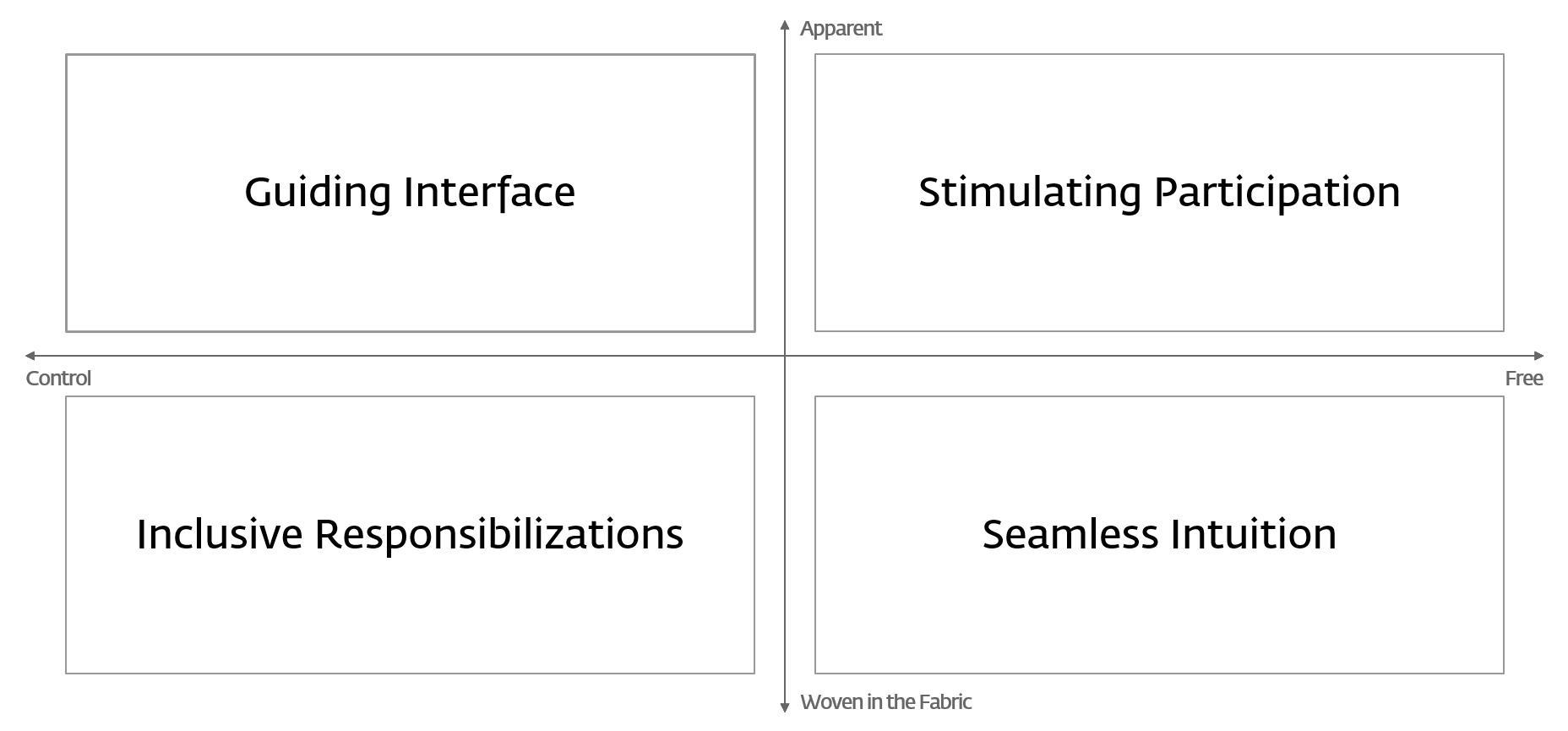
As its name implies, platform brands in this quadrant act as a guide or in some extreme cases as a commander. The platform brand exerts control over users to follow established rules and steps. Its user interface is apparent and straightforward. Every single step is guided and precisely designed to lead us to the routes the platform brand has created. Google’s search engine falls into this space. From the first letter typed, Google shows the limited possible directions, suggested from its big data. Results are well classified to form and strengthen our internet search experience. It becomes a functional tool and our habitual search engine in life. It is the synonym for search and reliability. Chinese Baidu and Microsoft Bing both need to follow the routes and user experience set by Google, as users feel awkward when they see something different from to the industry standard they are already accustomed to.
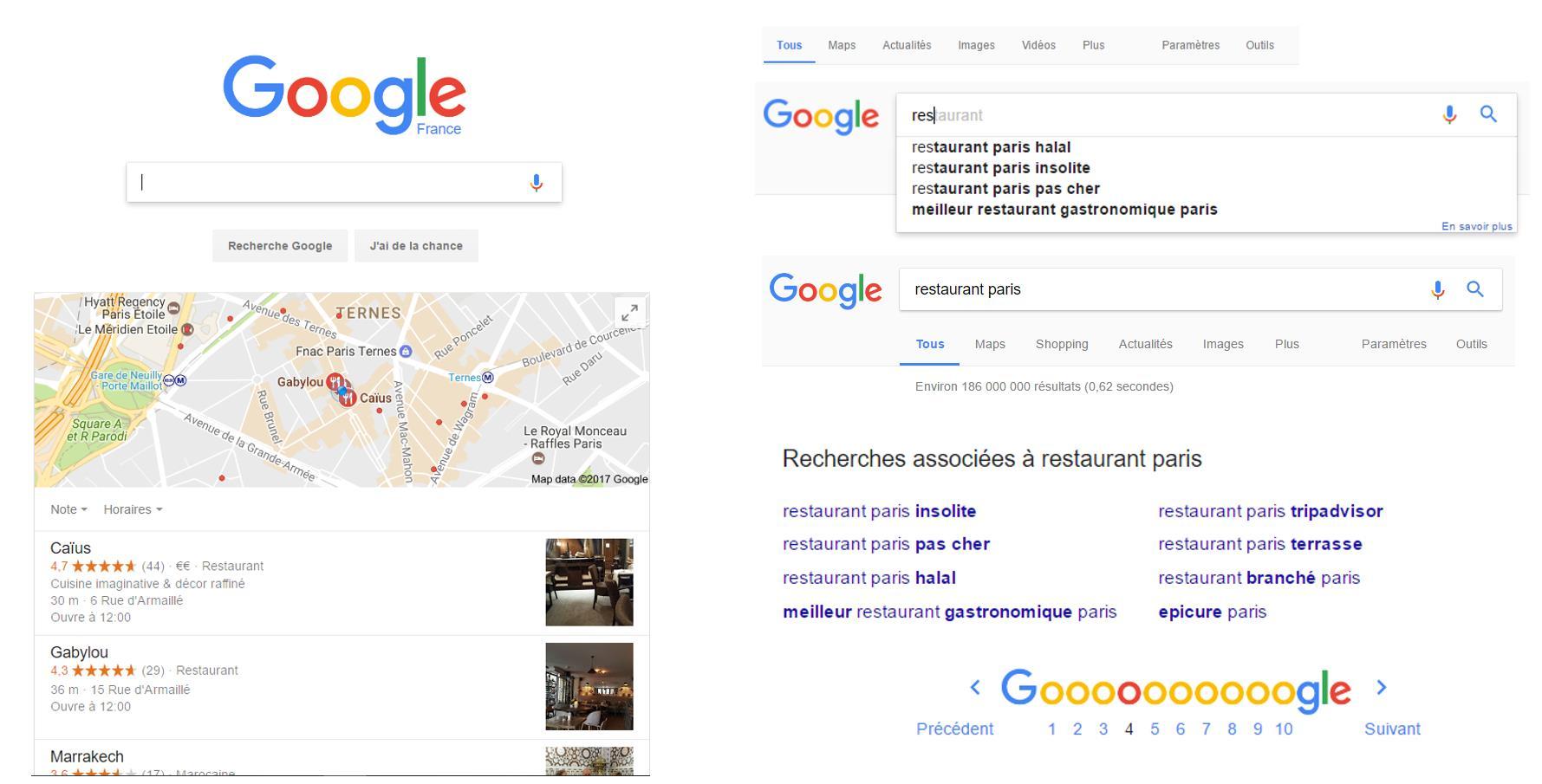
As increasing access to more users’ activity data is a ‘must-have’ to gain more context, platform brands characterized as guiding interfaces also evolve along the way, i.e. from single service to multiple service platform (MSP), from a single business category to diversified business territories. As WeChat below suggests, it is possible to evolve from a social tool to a social-centered living accessory. We now use WeChat for not only chatting but also gaming, paying utilities, reading, shopping, ordering, wealth management, and more. The user is guided towards using and adding to as many WeChat functions as possible since it has penetrated deeply into different aspects of our life. It becomes a synonym for social tool, embedding reliability plus ease-of-usage that connects to various living scenarios.
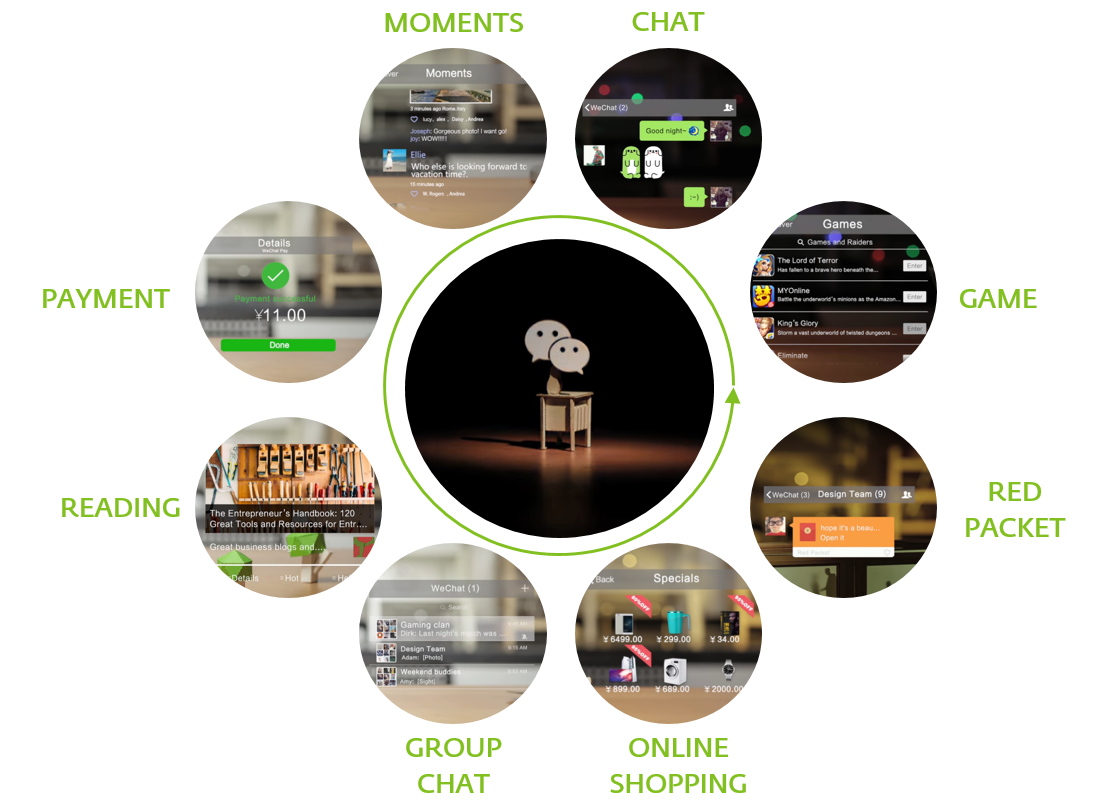
Guiding interface platform brands go beyond emphasizing the benefits brought about by functionality. Recently, Tmall launched its new brand strategy, shifting its positioning from a ubiquitous shopping platform – Tmall is enough (上天猫就够了) – to the pursuit of an ideal lifestyle for different customer segments: Ideal Life, go to Tmall (理想生活, 上天猫). Incorporating deep consumer understanding and insights, instead of directly selling products based on isolated functional needs, Tmall portrays several “living status models” for users to relate to and builds association of relevant product brands around. Through this soft approach, Tmall regroups its user segments into Healthy lifestyle pursuer (乐活绿动), New single fabulous (独乐自在), Dare to be free (人设自由), Technology Savvy (无微不智), Amateur master (玩物立志) and creates a new set of rules for guiding activities around the platform. Besides reliability and usability across different scenarios, platform brands that are a step ahead preset consumer archetypes to lead users on planned routes of the platform, communicating a sense of belonging.

Most UGC-based platform brands fall into this quadrant: Facebook, for example, encourages participation from users and presents itself as an empty space for others to interact in. It allows developers to produce apps, companies to create pages, and users to share information in a way that brings in even more users, as long as they follow some fixed yet generative politics set by the platform brand.

The platform brand acts as a moderator, providing stimuli and tools to consistently encourage creation and production from participants. UGC is present via the platform brand’s framework and is organized to re-stimulate sharing and communication among its users. Douban, with its brand positioning of “Our Spiritual Corner” (我们的精神角落), creates spiritual belonging for different people that share a similar interest in a particular movie, music, book, DIY activity, hobby, etc. and provide stimulation for participation in everything from photography, to travel, to buying and selling goods in an online marketplace.
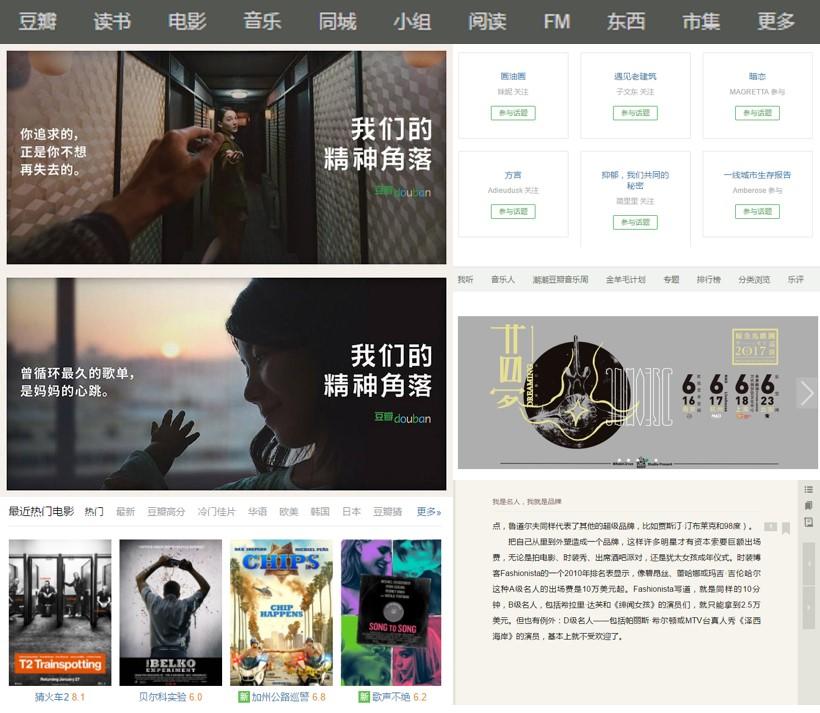
Connecting more people from different places is the driver of stimulating participation platform brands. However, with so much content coming in from all around the world and from people with different values and interests, how to make it easier for others to understand, to absorb, to share, and to re-create is a big task to accomplish. Streamlining information flow, simplifying participation steps, customizing content push, and grouping shared interests which helps to create more user-friendly experiences are important. Moreover, a balance between individual freedom and non-interrupting organization is key to the success of stimulating participation platform brands. This is called fixed yet generative politics set by the platform brand. Also, note that this positioning is not limited to UGC platform brands only. As Didi becomes almost the monopolistic mobility services platform in China, it starts to deliver a brand message of “inviting all hailing companies to jointly develop better mobility solutions for people” which suggests a tendency towards stimulating participation.

As guiding interface platform brands are most likely to be the tycoon in a single specialized category and stimulating participation platform brands are closely linked to the UGC business model, inclusive responsibilization platform brands apply to both newcomers who wish to cut through clutter and mature players developing well-managed sub brands.
Airbnb initially started by creating value in vacant rooms, connecting hosts with people looking for a value-for-money short-term stay. Yet, Airbnb is also known as a hospitality industry disruptor and an advocator of the aspirational vision “Create a world where 7 billion people can belong anywhere.” As such, it goes beyond an intermediary of connecting tenants and domestic hosts and delivers a call-to-action for the world to view travel, and hospitality, in a new way. It becomes a brand with a worldwide responsibility on its shoulders and aims to change the routine of the world. It is powerful as a ‘niche’ player cutting into a stable and stagnant industry. Also, it gives Airbnb space to develop more services around the ‘live as a local’ concept, such as introducing local dining, local entertainment, local destinations of interest, and more.

What’s more, organizing sub brands under inclusive responsibilities is also a good way to ensure effective brand equity accumulation to deliver a consistent brand image to the audience. Alipay, originally under Alibaba company, is now independently branded as Ant Financial – a completely separate platform brand. Under its umbrella are Alipay, MYbank, Zhima Credit, and Ant Fortune. At the corporate level, Ant Financial positions itself as an inclusive responsibility-based platform brand “Bring small and beautiful changes to the world”, overarching Alipay (“Build a No Cash Society”), MYbank (“Serving Small Business”), Zhima Credit (“Build a Credit Society”), and Ant Fortune (“Provide Equal, Easy and Credible Financial Service”) to organize its brands from the different emotional and functional perspectives of financial services.

While inclusive responsibilization platform brands emphasize out-loud the changes a platform brand will bring to the world, seamless intuition platform brands take the quiet and unnoticeable route of supporting customers’ life with intuitive solutions that deliver emotional benefits, such as carefree, quality services, and more. It shifts the focus from what the platform offers or creates to an experience focused on life and people. Platform brands become invisible, immersing into users’ daily lives. It not only offers a user-friendly platform, but also enables an intertwined “living body” with users. The brand’s duty extends from simply helping users “make it” to providing solutions to “make it better and more suitable for you”.
For example, Blablacar and Didi talk less on product offerings but more on emotional resonance, showing how much they care about delivering an enjoyable moment to users. No matter how bad users’ days are, they want users to still believe in a good quality of life.


Going further, platform brands are more than caretakers. The platform is not definitively important; the enriching experience, the enlightening adventure, the positive possibilities the platform brand enables is more so. For example, WeWork as an inspirational working hub positions itself as an enabler through its tagline “You are the creator of your life” (生活由你开创) in the China market.

The 4 positioning spaces identified have told us different success stories of platform brands. It also provides direction to overcome the possible negative perception of monopolies, driven by network effects, and governs interaction possibilities as platform brands access an increasing number of activities across different categories.
Platform brands in this quadrant are normally an authority in a single specialized area. The platform brand is reliable and enhances your relationship with the platform by emphasizing the ease of connecting to different activities, and the accessibility of offerings that can fit with a lifestyle and personality.
Platform brands here present a very user-friendly and engaging environment, allowing different people to realize possibilities in some aspects and help people with shared values and interests to find each other, enhancing the sense of belonging within the online community.
Platform brands advocate stepping away from the category routine and taking on a challenge to create something better for everyone. They leverage existing pain points to portray a different and better future, resonating with challenge takers, innovators, and early adaptors to shake the existing landscape of the industry.
Platform brands shift the focus from what platforms offer to what helps make the experience better. The target audiences become the center of the brand positioning; platform brands comfort, facilitate and empower users to enjoy a better mood, indulge more special moments, and achieve more possibilities. Platform brands are less visible and woven in the fabric in this case.
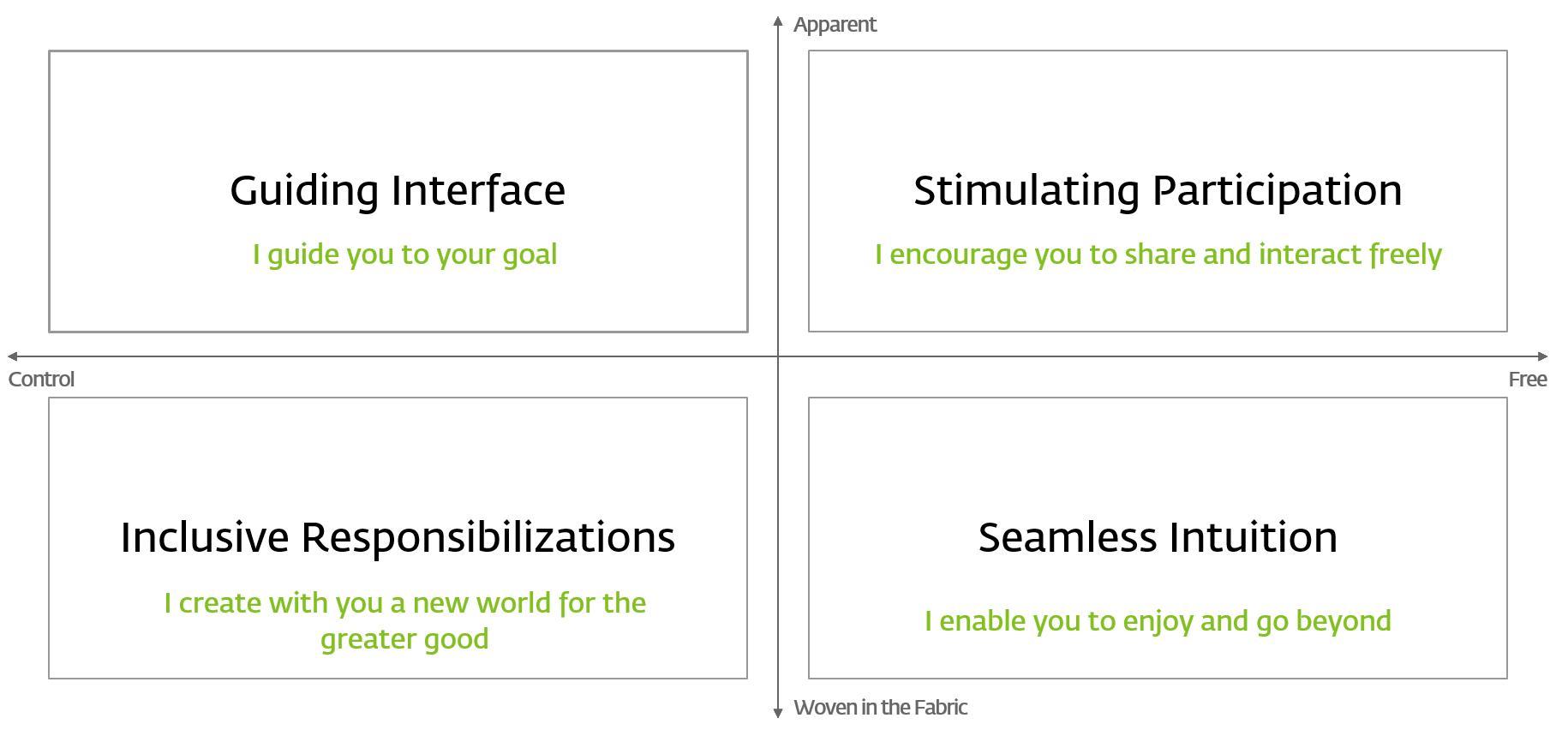
Last but not the least, there is no fixed view on suitability of the above positioning spaces for a single brand. Different stages of the platform brands may imply different choices. As noted, Didi’s brand positioning is changing from stimulating participation to seamless intuition as it becomes bigger in the Chinese market. However, it is never good to be positioned in different places at a single point in time. A systematic brand management is needed once the choice is made. For example, how do verbal and visual experiences ensure that the user perception of the platform brand is in line with its positioning? How are brands and sub-brands organized to create optimal synergies? Read on for more information on the new landscape of platform brands.
A Labbrand Group Company © 2005-2024 Labbrand All rights reserved
沪ICP备17001253号-3* Will be used in accordance with our Privacy Policy
To improve your experience, we use cookies to provide social media features, offer you content that targets your particular interests, and analyse the performance of our advertising campaigns. By clicking on “Accept” you consent to all cookies. You also have the option to click “Reject” to limit the use of certain types of cookies. Please be aware that rejecting cookies may affect your website browsing experience and limit the use of some personalised features.